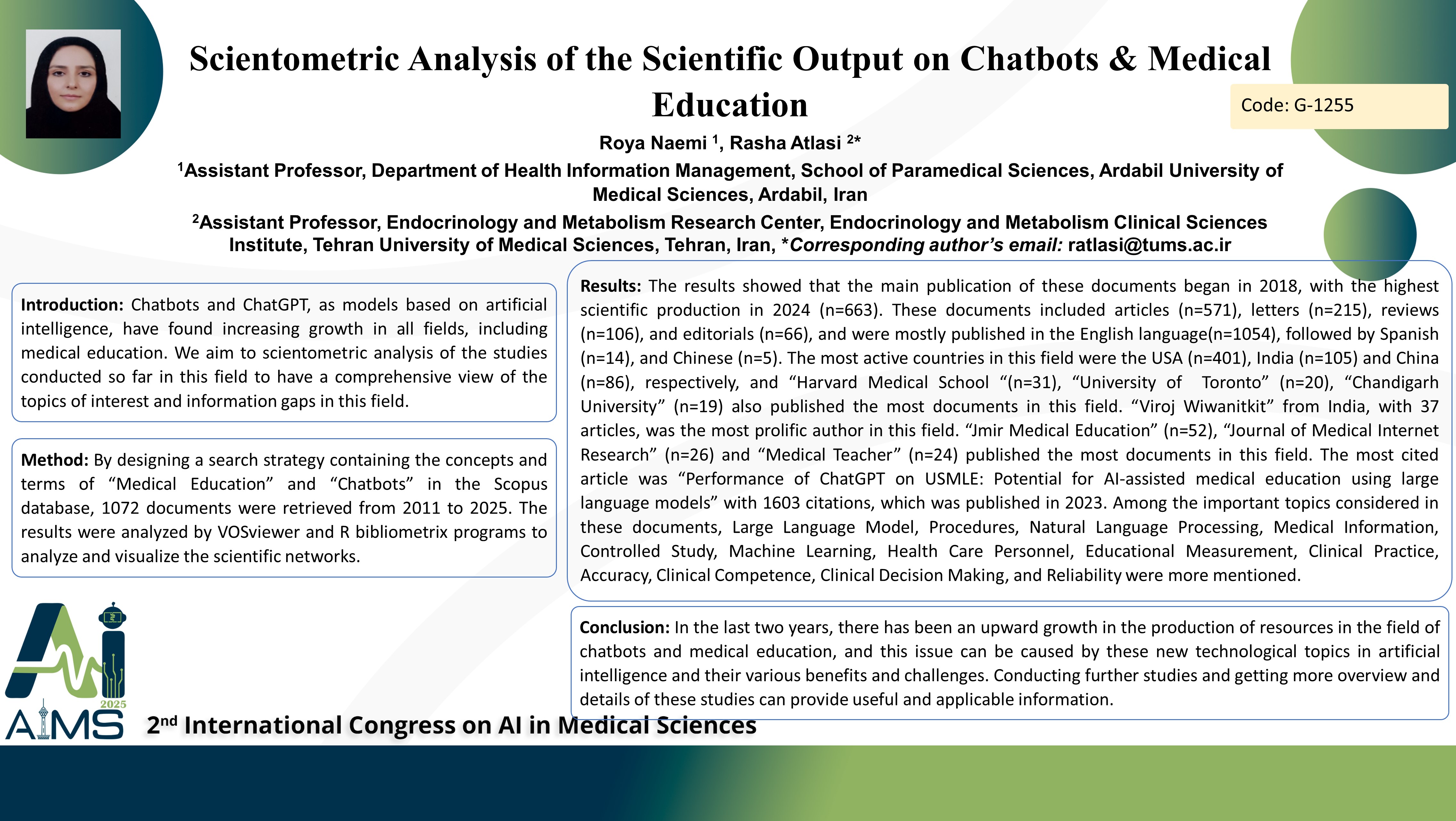تحلیل علم سنجی برونداد های علمی حوزه چت بات ها و آموزش پزشکی
کد: G-1255
نویسندگان: Roya Naemi, Rasha Atlasi * ℗
زمان بندی: زمان بندی نشده!
برچسب: دستیار مجازی هوشمند
دانلود: دانلود پوستر
خلاصه مقاله:
خلاصه مقاله
Background and aims: Chatbots and ChatGPT, as models based on artificial intelligence, have found increasing growth in all fields, including medical education. We aim to scientometric analysis of the studies conducted so far in this field to have a comprehensive view of the topics of interest and information gaps in this field. Method: By designing a search strategy containing the concepts and terms of “Medical Education” and “Chatbots” in the Scopus database, 1072 documents were retrieved from 2011 to 2025. The results were analyzed by VOSviewer and R bibliometrix programs to analyze and visualize the scientific networks. Results: The results showed that the main publication of these documents began in 2018, with the highest scientific production in 2024 (n=663). These documents included articles (n=571), letters (n=215), reviews (n=106), and editorials (n=66), and were mostly published in the English language(n=1054), followed by Spanish (n=14), and Chinese (n=5). The most active countries in this field were the USA (n=401), India (n=105) and China (n=86), respectively, and “Harvard Medical School “(n=31), “University of Toronto” (n=20), “Chandigarh University” (n=19) also published the most documents in this field. “Viroj Wiwanitkit” from India, with 37 articles, was the most prolific author in this field. “Jmir Medical Education” (n=52), “Journal of Medical Internet Research” (n=26) and “Medical Teacher” (n=24) published the most documents in this field. The most cited article was “Performance of ChatGPT on USMLE: Potential for AI-assisted medical education using large language models” with 1603 citations, which was published in 2023. Among the important topics considered in these documents, Large Language Model, Procedures, Natural Language Processing, Medical Information, Controlled Study, Machine Learning, Health Care Personnel, Educational Measurement, Clinical Practice, Accuracy, Clinical Competence, Clinical Decision Making, and Reliability were more mentioned. Conclusion: In the last two years, there has been an upward growth in the production of resources in the field of chatbots and medical education, and this issue can be caused by these new technological topics in artificial intelligence and their various benefits and challenges. Conducting further studies and getting more overview and details of these studies can provide useful and applicable information.
کلمات کلیدی
Chatbots, Medical Education, Scientometric
